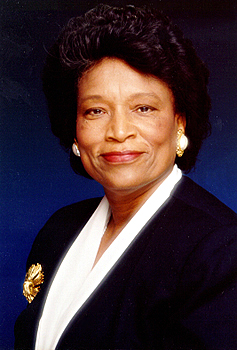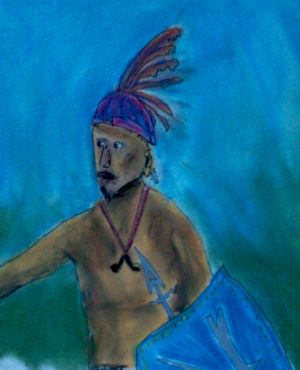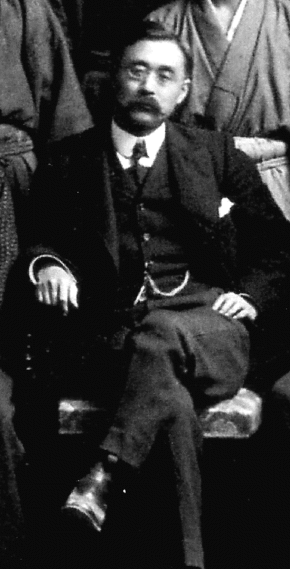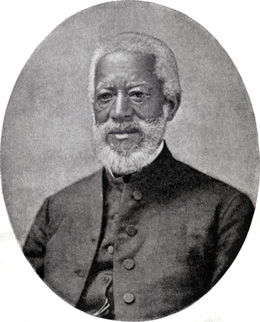Welcome to the geofictician wiki.
Portal:Ardisphere/FeaturedPerson
Current Featured Person
2015-03-01
| Soledad Ionescu (born 1953, Orașul Aleatoriu, DS) was the 35th prime minister of the Ardisphere, serving most of president Dante Benengeli's second term as his cabinet chief, from 1991 until 1995. She had been his foreign minister up to 1991, but when the previous prime minister resigned in order to pursue elected office, Ionescu was chosen to replace him. She went on to serve briefly as Ardisphere's ambassador to the Assembly of Nations, and in 1996 she was elected to be the 6th Chief Secretary of that body, serving the single customary term until 2002.
As foreign minister, she was highly respected both within the Ardispherian government as well as the international community, proving both effective and the consummate diplomat. Her period as prime minister was less successful - it was only time she stepped away from her diplomatic career into the wider fray of politics, and she was not adept in the more rough-and-tumble of domestic politics. Her term at the AN was marked by the ongoing crises in Commonia, as well as several other world events that tested the AN's capacity for humanitarian work, but by all accounts she met the challenges well. Since ending her term, she took a post at the Universidad Nacional in the international relations department, but mostly she serves in various think-tanks. She has also remained active on various single-purpose diplomatic appointments and mediating missions. More . . . |
2015-02-21
| Quentín di Battista (born 1779, Faro, DS; died 1827, St. Richards, Pretany) was a military leader and important figure in the Ardisphere's war for independence in the 1810's.
In 1818, he turned over his role as Ministro de Guerra to Edgardo Kim Colón, because of the dearth of qualified diplomats to represent the young nation internationally. Errázurriz apointed him Ambassador-at-Large. He travelled to Bengonia, Darcodia where he was for several years, and then to St. Richards, Pretany, where he served as the Ardisphere's ambassador to the large Ulethan nation until his death in 1827, probably from influenza. His body was returned to the Ardisphere and he was provided with a state funeral. He buried at the Cemeterio Nacional and is considered a hero of the nation. More . . . |
2015-02-17
File:Hong Myung-Bo in 2009 from acrofan.jpg Sr Hu receiving an Ardispherians in sports award in 2014 |
Jong-sin "Yoñi" Hu (Gohangukian Hu Jong-sin [후종신 hanja 后鍾信] - born 1977, Jangmi-si, CC) is an Ardispherian footballer considered one of the best of his generation. He has been captain of the Ardispherian national team, but currently he plays for Säntjana Linna FC in Karolia.
Hu showed great promise from an early age, and in middle school he was a star player on his county-league's high school team for his hometown, helping that team to win a national championship when he was only 13 years old. He graduated high school ("liceo") two years early to jump-start a university playing career at age 16, and played for the Universidad Graves García Club at Capital Boreal, DB, propelling that formerly obscure team to several national titles. He was actively recruited by many Ardispherian and international teams but opted to finish his degree in Kinesiology first. In 1997, Hu started playing for Deportivo Riograndense in Villa Constitución, DF, but, ambitious and unhappy with the quality of his teammates, he left the black and gold after only 2 years for international prospects. More . . . |
2015-02-16
| Zulema Costa Talante (born 1941, Villa Constitución, DF) was the 28th president of the Ardisphere, serving a single full five-year term from 1995 until 2000. She was a long-active member of the Partido Socialista when she ran, but she was a newcomer to politics, having served as a journalist, television producer and businesswoman prior to running. She said she had often thought of entering politics, but had always been busy with her career, yet her business successes combined with a dearth of suitable Socialist candidates in the early 1990s suddenly made her a plausible candidate for an entry to politicss at the highest level.
Costa Talante's greatest accomplishment during her presidency was the Reforma Educativa, a massive piece of legislation that altered the relationship between the Federal government and the federal subjects in matters of education, guaranteeing government support for university-level education for the first time, making kindergarten mandatory and offering near-universal pre-K for those who desired it for the first time. Other accomplishments include a reversal of some the of the more controversial privatizations of her predecessor, and some minor inroads into the intractable issue of judicial oversight of local government. More . . . |
2015-02-15
| Ricardo Aviles (born 1820, Lagarto, DP, died 1901, Villa Constitución, DF) was the 10th president of the Ardisphere, serving two full 5-year terms from 1880 until 1890. A member of the Partido Federal, he is often considered the worst president in Ardispherian history, because of the extreme economic difficulties of the era - the so-called Silver Crisis of 85 - combined with a kleptocratic and divisive congress that was ineffective and reviled by the common people. Nevertheless, in large part Aviles' reputation is unearned, because he was not directly involved in most of the corruption of the era, and, saddled with a fractious, opposition congress, it was guaranteed that he would prove ineffective as well.
In any event, he was the last member of the Federales to serve the top post for 20 years, as first the short-lived Partido Popular took the stage and subsequently a redefined Partido Liberal. Aviles himself only lived a few years after his retirement, and died at 73 years of age a deeply unpopular and disappointed man. More . . . |
2015-02-13
| Elvira Ordon-Grabb (born 1811, Islandia, DS; died 1873, Jack Woss Creek, DS) was an Ardispherian politician who served as the president of the short-lived, breakaway Repúblicas Autónomas del Sur (RAS) during the Ardispherian Civil War, from 1854 until 1858.
Ordon-Grabb was born to a wealthy family of Ingerish descent which had settled in the village of Islandia, on the island called Isla Cerrada (Closed Isle) on the Ardisphere's south coast. She grew up fairly privileged and by her own account had no interest but to continue the family sea-trading business and marry her first love, a sailor and ship's mate some 10 years older than she who had the euphonious name of William Ward Walter. Her fiancé, however, was arrested for piracy in 1830 (and there is controversy to this day as to whether he was actually engaged in piracy or not, but recent research suggests that he was). Because of that, Ordon-Grabb was suddenly inspired to study law, and graduated in 1837 from the Colegio La Fourchet in Palmeras Grises, DS. More . . . |
2015-02-12
Parménides Guie (Gohangukian Gye Bo-gyeong [계보경 hanja 桂甫炅] - born 1888, Jeongto-si, CC; died 1987, Chuguk-si, CC) is considered the greatest Ardispherian novelist to write primarily in the Gohangukian minority language. His great work, 고독한 가곡 108회 ([godokhan gagok baekpalhoe], 108 Canciones de Soledad / 108 Songs of Solitude, published 1935), is considered the defining work of not just the Gohangukian-Ardispherian experience but of the mid-20th-century Ardispherian in general. He was fluent in both Gohangukian and Castellanese, and always translated his own work, but he always stated that he did all his composition in Gohangukian, and kept a very large library of classical Gohangukian poetry scrolls and books brought from the old country by his grandfather.
More . . . |
2015-02-11
| Quichago (born ?1542, Cualahualú, DC; died 1582, Faro, DS) was an Altazorian chieftain who led a rebellion against the Castellanese colonial powers during the early years of the Ardisphere. Born to the warrior caste in the native village at Cualahualú, he showed great bravery as well as intelligence and was selected as chief when the former chief was captured and killed by the Castellanese in 1570. His charisma and relative youthfulness persuaded the other chieftains of the Costa de Dragones region to unite and attempt a bold attack on the Castellanese at a fort near the village of Esmeque (near modern Lowe, DC), which was successful. Now in possession of a large tranche of weapons and horses, Quichago harried the Castellanese in their coastal settlements from Santiago (Faro, DS) down to Santa María (Palmeras Grises, DS). The Castellanese governor Isidora de Blandián finally appointed the adventurer and mercenary Isaac Gutiérrrez to use "cualquier método que sea requerido" to hunt down and destroy the chief. Leading a multi-year campaign of pillage and genocide, primarily targetting villages including noncombatant elderly and children, Gutiérrez wore down the Altazorian rebels until their spirit was broken.
Quichago was captured and forced to surrender in 1581, and after a kangaroo court he was hung in the cathedral square in Faro the subsequent January. He is now revered as a hero among native Altazorians, and the non-Altazorian majority in the Ardisphere also generally view him positively, mostly disregarding or overlooking their own ancestors' complicity in his death. More . . . |
2015-02-10
| Lautaro Lombardo-Lorentz (born 1888, Villa Constitución, DF; died 1977, Albañiles, DO) was the 21st president of the Ardisphere, serving a single five-year term from 1945 until 1950. As a member of the Partido Federal during a period of backlash against the intense socialism of the 1930s and early 1940s under the Partido Socialista, he was considered a mediocre president, who seemed too bogged down in domestic politics to be effective. Further, the so-called "Caza de Rosaditos" ("hunt for pinkos"), a series of anti-communist trials and hearings in the Federal Congress, tainted his presidency when they were later discredited as having been based more on ideology than on genuine threats to Ardispherian security.
Recognizing his unpopularity, after ceding control of the party he declined the renomination for a second term. Instead, the Federalists nominated the charismatic Carlota Juárez y Cabal. Subsequent to his successor's victory in the 1950 election, she appointed him as ambassador to Karolia, where he served for 7 years before moving on to a position as Ardispherian representative to the Assembly of Nations. Most historians evaluate his diplomatic career more positively than this political career, as he seemed to effectively separate himself from the rough-and-tumble of Ardispherian domestic politics. In fact, he remained ambassador to the AN even after the opposition Socialists took the presidency in 1960. More . . . |
2015-02-08
| Ángel Keum (Gohangukian Geum Do-hun [금도훈 hanja 琴度勲] - born 1803, Macondo, DC; died 1871, Villa Constitución, DF) was the 6th president of the Ardisphere, serving two full five-year terms from 1855 until 1865. The founder of the Partido Federal, he led the country during the fractious and nearly disasterous Ardispherian Civil War, and by many he is considered to have been the Ardisphere's greatest and most important president, commonly called the "Savior of the Federation" (El Salvador de la Federación).
During the divisive elections of 1855, the preceding president, Aquiles Huidobro, had originally intended to step down, as Keum battled against Octavio Sepúlveda of the Partido Liberal, who made many promises to the increasingly restive autonomists in the periphery of the country. Most historians agree that in sheer number of votes, Keum won the election, but the margin was so small and there had been so many irregularities that the election ended up in the Federal Senate. Unfortunately, the Senate failed to muster a quorum, because the autonomists had walked out en masse, with the consequence that the election was considered constitutionally undecided. Huidobro's auto-coup permitted Keum to take office, but the consequence was the secession of the Departamento del Sur under Governor Reina McQueen (later joined by the Departamento Boreal under Espartero Yun), and the beginning of the Civil War. As president Keum navigated the complexities of the war masterfully, and despite a poor start, the war was won by 1858. Although his Federalist platform had denied all the autonomists' demands, Keum realized the wisdom of amnesty and reconciliation. Thus it was that even though the autonomists lost the war, many of their more reasonable demands were fulfilled during Keum's second administration, after reelection in 1860. Keum was so popular and successful that at the end of his second term, allies in Congress attempted to amend the constitution to allow him a third term, but he was adamant that he should step down, and so he sponsored his somewhat mediocre Prime Minister, Daniel Menores, to succeed him. Menores essentially won the election on Keum's campaign support, and Keum was fairly active "behind the scenes" in ensuring the continuity of the Menores Administration. Unfortunately, as he passed his 65th birthday in 1868, Keum's health began failing, and he was forced to step away from his leadership role in the Partido Federal that he had founded. The former president having disappeared from the public sphere, Menores lost the 1870 election to a resurgent Partido Liberal under Oscar Robertson, and by the time Keum passed away the following year, it almost seemed that the Civil War had never occurred - politics had returned to "normal." Nevertheless, Keum's legacy is unequaled: he gave the Ardispheric Federation its modern political form, and the party he founded has continued to be the largest or second largest party in government continuously for the last 150 years. More... |
2015-02-07
Luciano Doon d'Orange (born 1840, Saint-Hubert de l'Açan, DB; died 1913, Bahía de la Jacaranda, DB) was a noted philosopher and author in the Ardisphere, who developed a significant body of work not just in epistemology but also in political theory and political economy, which had huge influence on the course of philosophy and political thought in the modern world.
More... |









